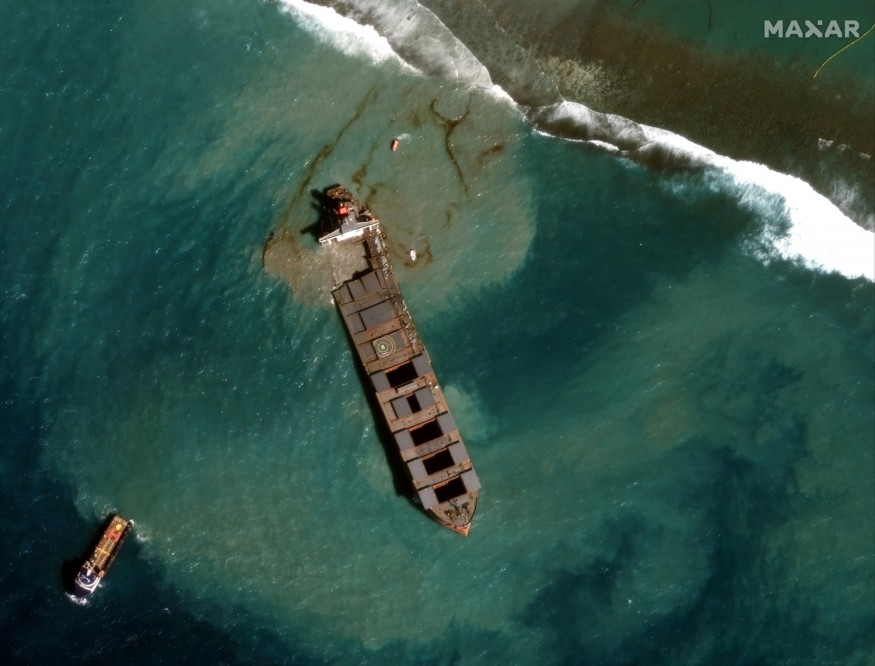It was on July 25 that MV Wakashio crashed into a reef off the coast of the Indian Ocean. The Mauritius Oil Spill began two weeks later as oil began leaking from the vessel threatening significant damage on the pristine waters and marine life and tourism-industry of the island.
Nagashiki Shipping, the owner of the vessel, reported that as of August 25, they have successfully sunk the front part of the ship in the open ocean as instructed by the authorities.

Two tugboats began towing the front section of the vessel to approximately 15 kilometers (9.3 miles) into the open sea and sunk it to the depth of 3,180 m (10,433 ft).
The smaller section, however, remains stuck in the area where the shipwreck occurred.
On Tuesday, the ship's captain and the second-in-command were arrested as officials investigate why the ship came close to the island. Japan's Kyodo News, however, said that the boat moved close to the shore to find a mobile signal so they can contact their families.
READ: Methane Leak: The Decade-Long Poisoning of the North Sea by a Major Gas Company
Mauritius Oil Spill Damage
The vessel spilled more than 1000 tons of oil into the pristine waters of Mauritius, which is a known tourist spot and the home of world-renowned mangroves and coral reefs.
A team of British scientists arrived last week to help in the assessment of the damage done to the island and find ways on how the ecosystem may recover.
The expert from Japan and France are also on the island since the start of the spill.
The British team would help determine the footprint of the oil and shoreline. The team will also help assess if the oil has reached seabeds and evaluate the impact of the oil spill on mangroves, coral reefs, and various marine species.
The Japanese experts and local officials of Mauritius reported that from their surveillance in several marine spots that are 800 meters away from the spill, they had not seen any damage yet, and no oil was found on the bottom of the ocean or the coral reef.
READ ALSO : Tropical Storm Laura Leaves 13 Dead in the Caribbean, Hurricane Marco Weakens but Still a Threat
Dr. Sue Ware, the senior British marine monitoring specialist, said the booms placed in the water seemed to be successful in preventing the oil from leaking unto the protected Blue Bay wetlands area.
The clean-up operations are now centered on gathering oil-covered seagrass and other plants that would end up on the shore.
Japanese officials, however, said that the remaining wreck and the ropes holding the oil fences are grinding against the reef. They said that removing the sediment would harm the coral and that removing the remaining wreckage seems to be the only solution to prevent further damage.
The soft mangrove forest soils are now contaminated with oil, the team of experts also said.
The Japanese team has not found damage in the mangroves yet, but the oil could damage it in the coming months.
Mangrove clean-up is exceptionally complicated as human activities would tend to drive the oil more in-depth into the soil, causing more harm, the Japanese team said.
Long-term monitoring in the area after the Mauritius oil spill was among the crucial recommendations of the Japanese team of experts to continually observe and address the damage.
READ NEXT: Increased Incidences of Stranded Whales Linked to Military Sonar Exercises, Experts Say
Check out for more news and information on Oil Spills on Nature World News.
© 2025 NatureWorldNews.com All rights reserved. Do not reproduce without permission.





